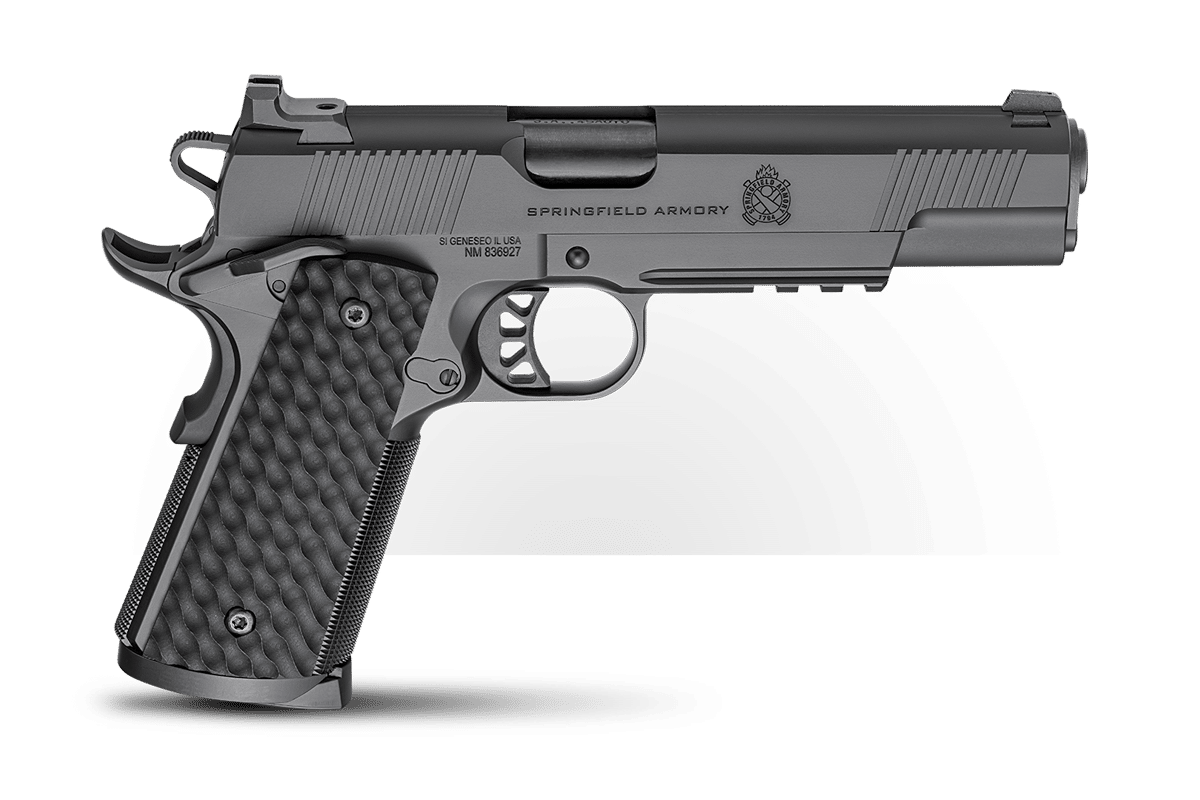C&G Covert 1911 Holsters Review
April 9th, 2022
6 minute read
Chris Burns reminds me some of my old friend, John Bianchi. Each started as a cop making holsters in his garage in his spare time, and each found success and ended up owning a company that makes top-quality handgun scabbards. C&G (the letters stand for the first names of Chris and his son Gary) now use modern CNC machinery to fulfill the dream Chris kicked off back in 2008 — to make the best, most useful Kydex holsters he possibly could.
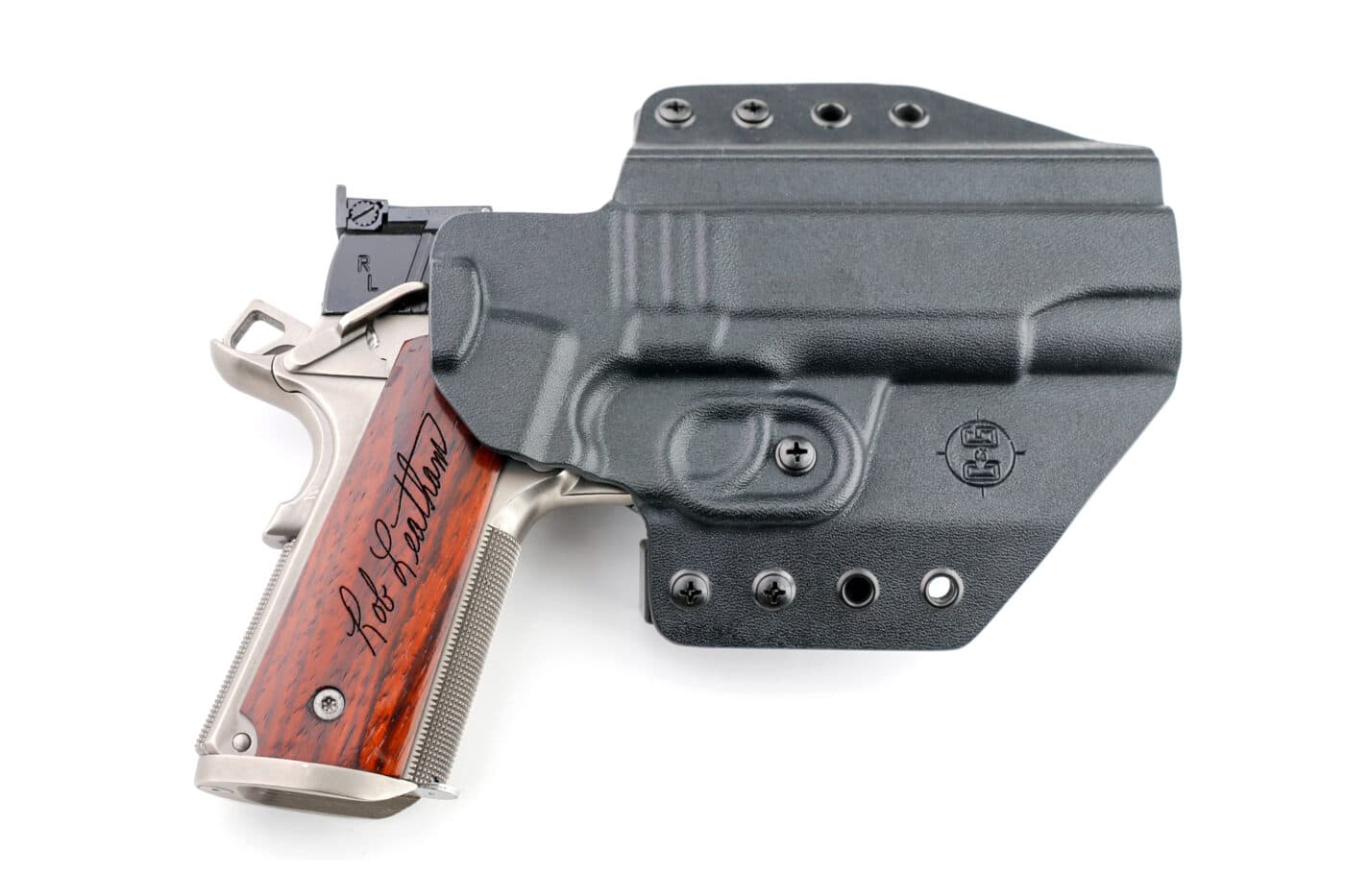
For this article, we tested three of his products. All were ordered right-handed, for full-size 1911 pistols. All were from C&G’s “Quickship” listings, which the company guarantees to ship within five business days of your order.
Three Amigos
Each of the three 1911 scabbards were different in design. The Covert, $59.95, is a simple inside-the-waistband (IWB) design with a sturdy belt clip. The Alpha variation of the Covert is a more sophisticated IWB design ($79.99). Finally, there was an outside-the-waistband (OWB) design in conventional style, also (rather confusingly) called the Covert ($69.95). Each came with neutral cant, that is, structured to hold the pistol’s barrel straight perpendicular to the ground.
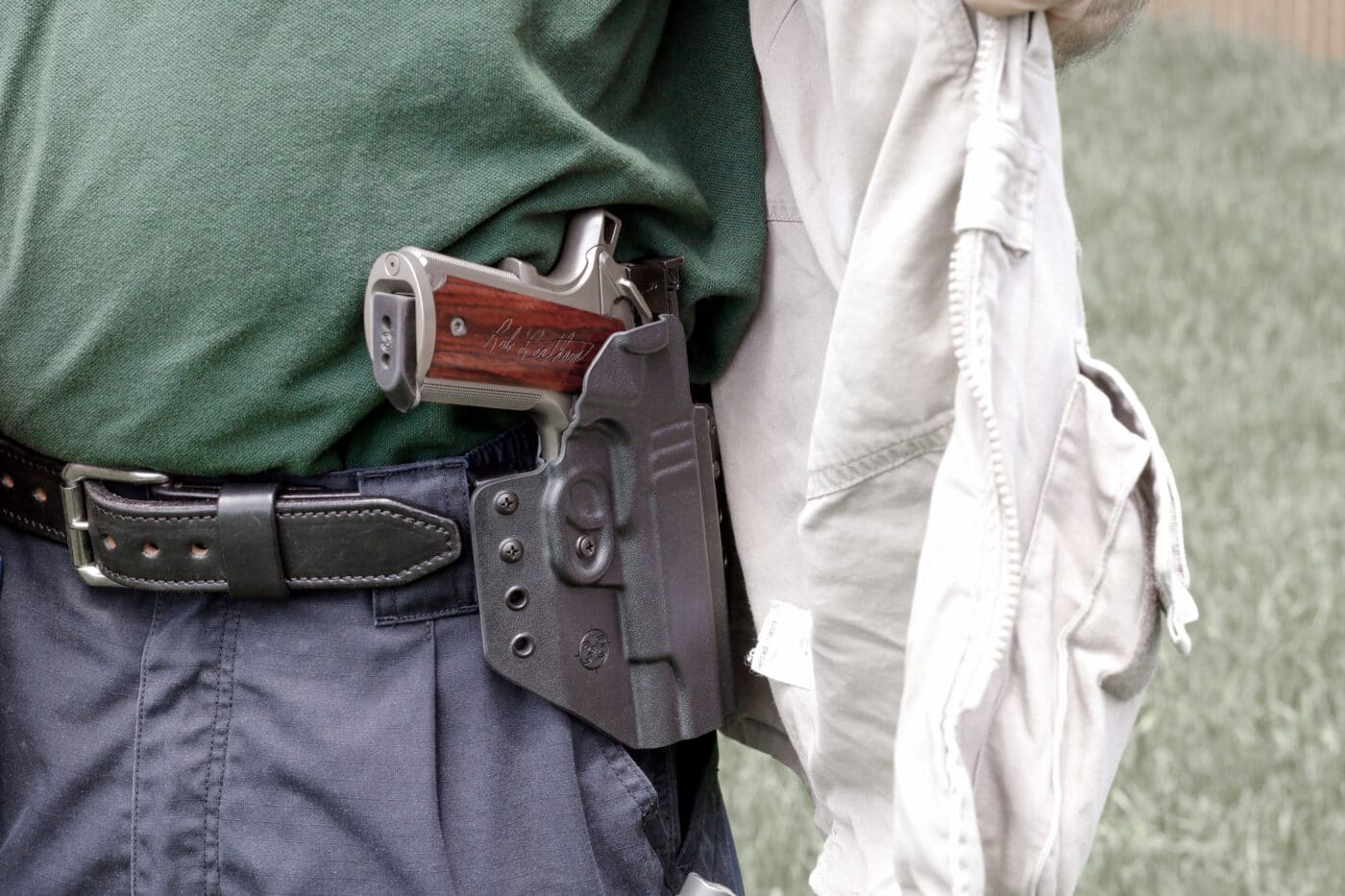
All shared certain characteristics. These are solid, rigid holsters. I see a lot of Kydex holsters that are left with sharp edges at the holster mouth, which can abrade the hand with constant practice draws. Not these. My fingers were never scuffed in extensively repetitive draws from each.
I am old enough to remember when clip-on holsters, particularly those inside the waistband, tended to come out with the gun on the draw. This would only save your life if it made your antagonist laugh so hard he forgot to shoot you. I think that is quite unlikely to happen with the C&G brand.
Weapon retention — countering disarming attempts — is something I’ve been teaching for more than 40 years, and quick draw longer than that. Working on those things with the two C&G IWBs with belt clips, the holster never came out with the gun, whether it was my hand doing the draw or my training partner’s hand trying to disarm me. C&G wins a solid point for that.
Draw Angles: Cant vs Tilt
The straight-up draw angles each of these came with are popular with those who prefer to shoot with their torso also straight up and perpendicular to the ground: it gives those shooters a cleaner, more natural draw path. Some of us prefer to shoot with the upper body aggressively forward, going into a less dramatic version of the FBI crouch, and for that the old “FBI tilt” works very well.
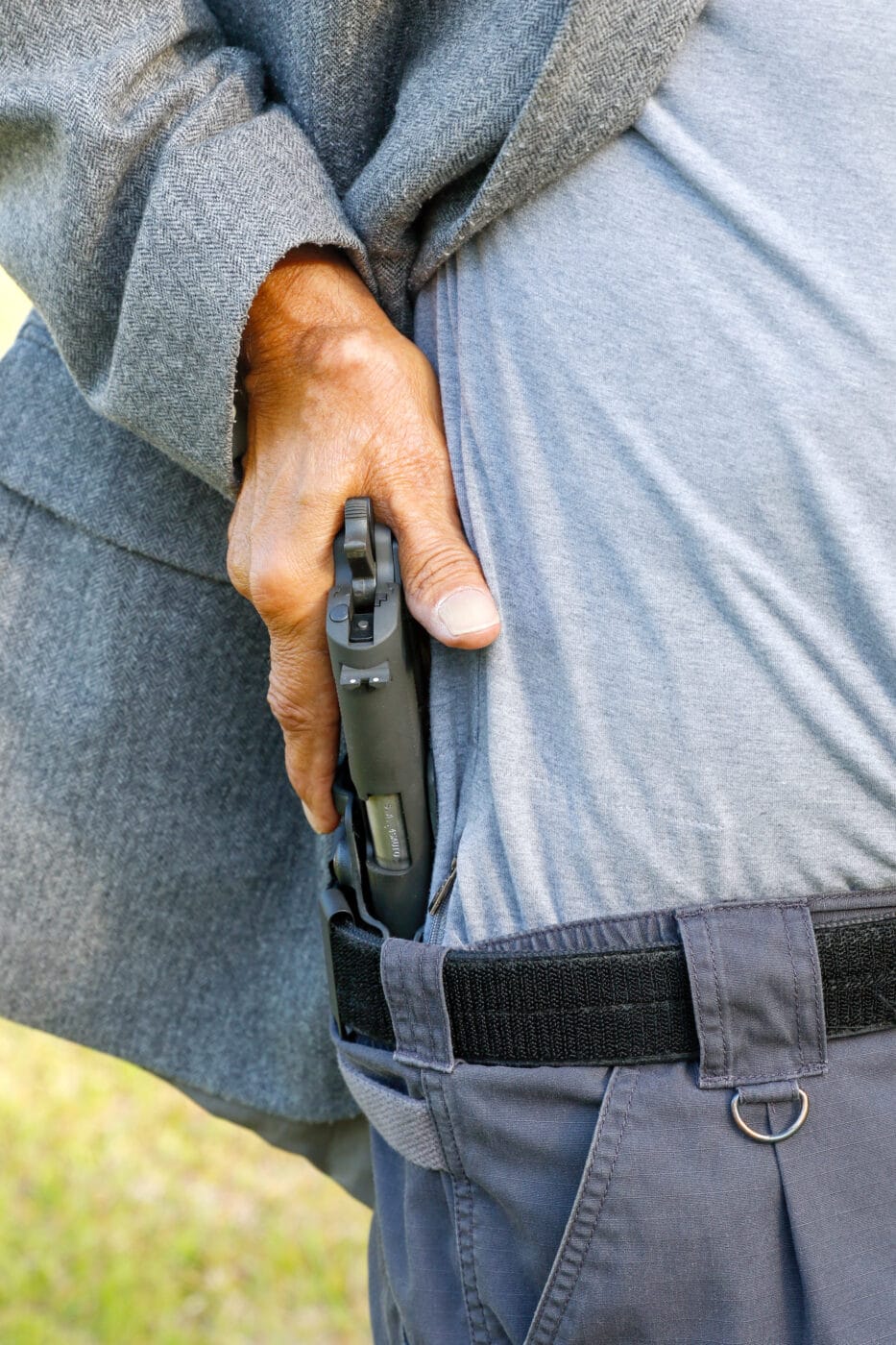
This is a good time to explain the difference between the often-confused terms “tilt” and “cant” as related to holsters. The way it has evolved over the years, “tilt” refers to the gun butt’s position relative to the barrel, while “cant” refers to the orientation of the muzzle in the same regard.
In the FBI tilt, the butt is forward of the muzzle, which means the muzzle has a rearward cant. A forward cant, favored by fast-draw artists of old such as Chic Gaylord in mid-20th century, tilts the butt to the rear and the muzzle is canted forward of the centerline of the leg and upright torso.
The neutral cant these holsters came with means the barrel is going straight down your leg when standing upright. For those of us who don’t have a lot of real estate at torso and particularly waist level, the forward FBI tilt with rear cant minimizes bulge and printing of the gun butt.
Chris Burns told me all these holsters except the Alpha have adjustable cant. With the OWB, you simply move the C-shaped belt loops, lowering the one in the rear, to achieve FBI tilt. With the standard Covert, Chris assures me, the belt clip can be removed and replaced at the chosen angle.
Carrying the C&G Holsters
I carried each for a day with one or another full-size, 5” barrel all-steel Springfield Armory 1911. None were uncomfortable. All were fast. None shifted on or in the belt.
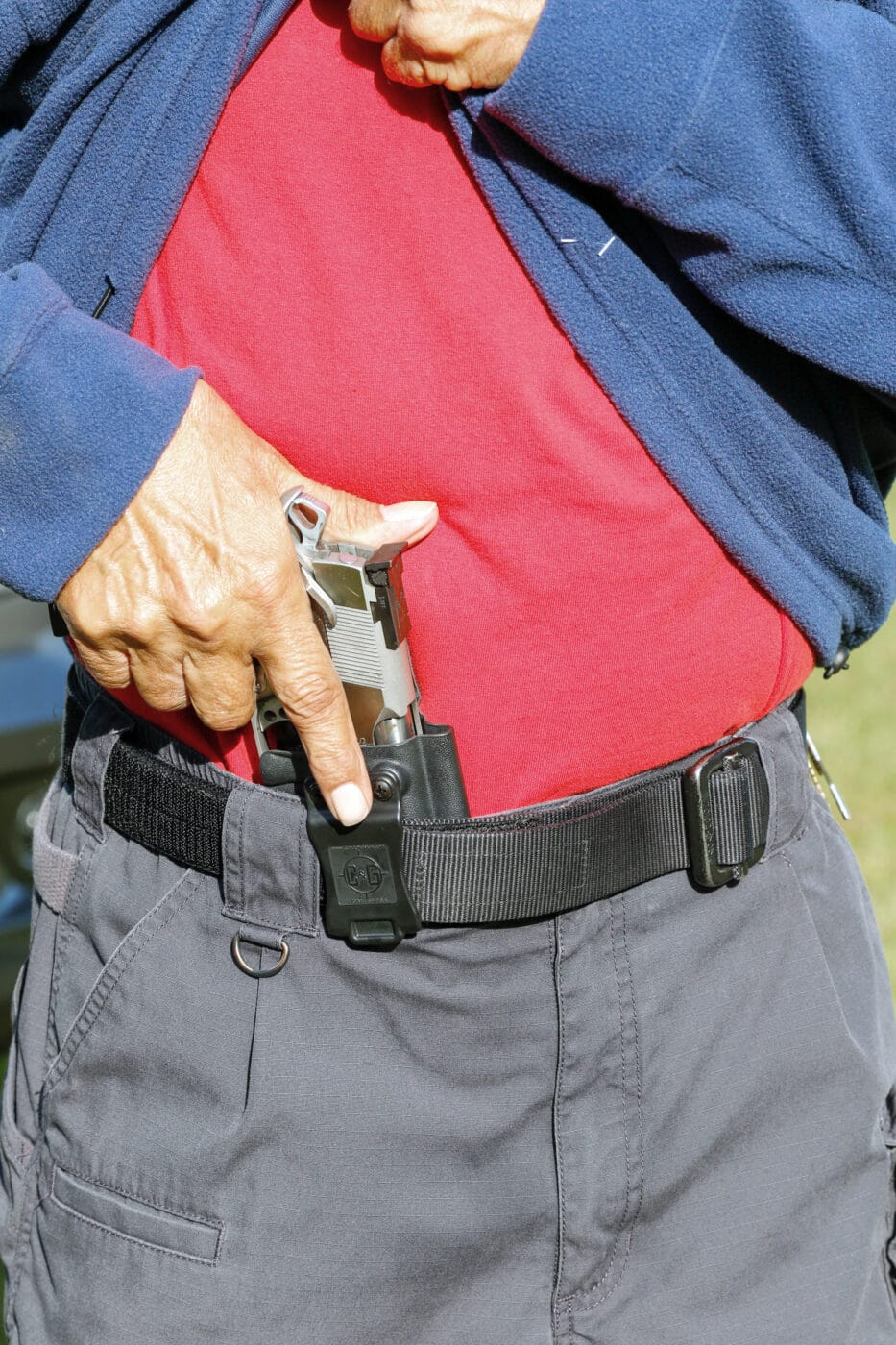
I did learn one thing. We American men tend not to read the owner’s manual; the stereotype has some truth to it. The instructions say explicitly to try an empty gun in the holster for fit before wearing it for real. Did the old guy here listen? Oh, hell, no! As soon as I took the Alpha out of its package I drew the .45 I was carrying, inserted it … and found it locked in tight. I had to very carefully apply the gentle kiss of a screwdriver to the adjustment screw to loosen it up and retrieve the loaded .45. Lesson learned … and now, shared.
Versatility
Trial and error taught me that each of these holsters could work just fine, not only in applications for which they were strictly designed, but in some for which they were not. Let’s look at each.
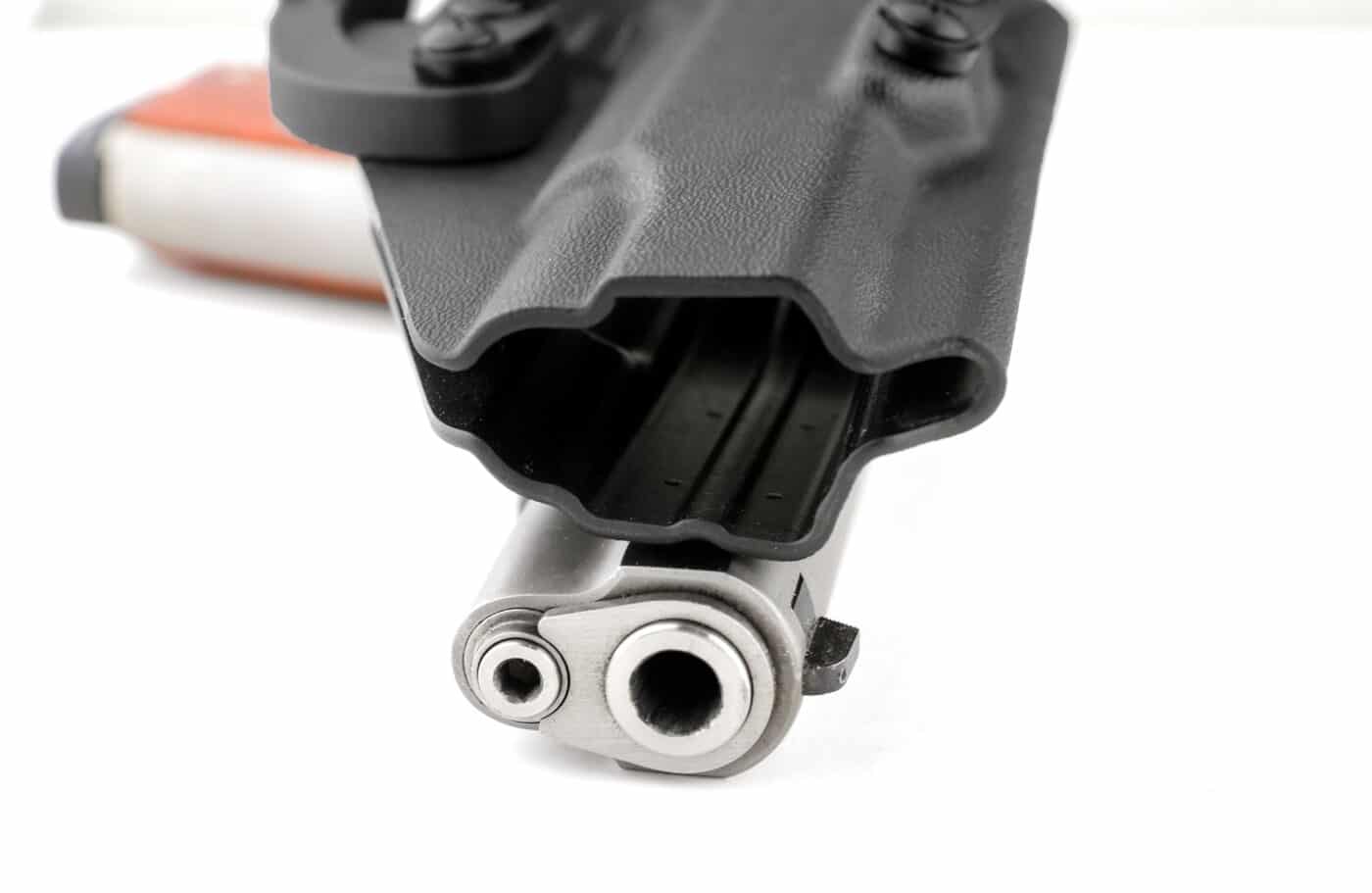
“The Alpha was designed for straight appendix carry,” Chris told me. I found that it worked fine for that. Chris explained the claw-like appendage at the rear of the Alpha, which C&G calls the Dark Wing, “helps pivot the gun on two rotational axes, pivoting the butt into the body.” The attachment has little steps on it that help to secure it in place. Chris added that the Dark Wing works best when inserted inside the waistband, between pants and body, as opposed to between belt and trousers.
It does indeed work … and I found it worked very comfortably in a hip position, not just the appendix carry position for which it was designed.
The least expensive Covert, designed apparently for hip carry — while comfortable and fast in that position — proved to work perfectly fine in appendix carry, too. That was a welcome discovery, because during the test period I was suffering from sciatica in the right hip area where I’ve carried a handgun for most of my adult life.
That sciatica thing helped me discover something else useful with C&G products. Their OWB holster was reasonably concealable and certainly very fast when worn on the gun side hip as intended. However, while searching for something more comfortable, I tried the C&G OWB cross-draw.
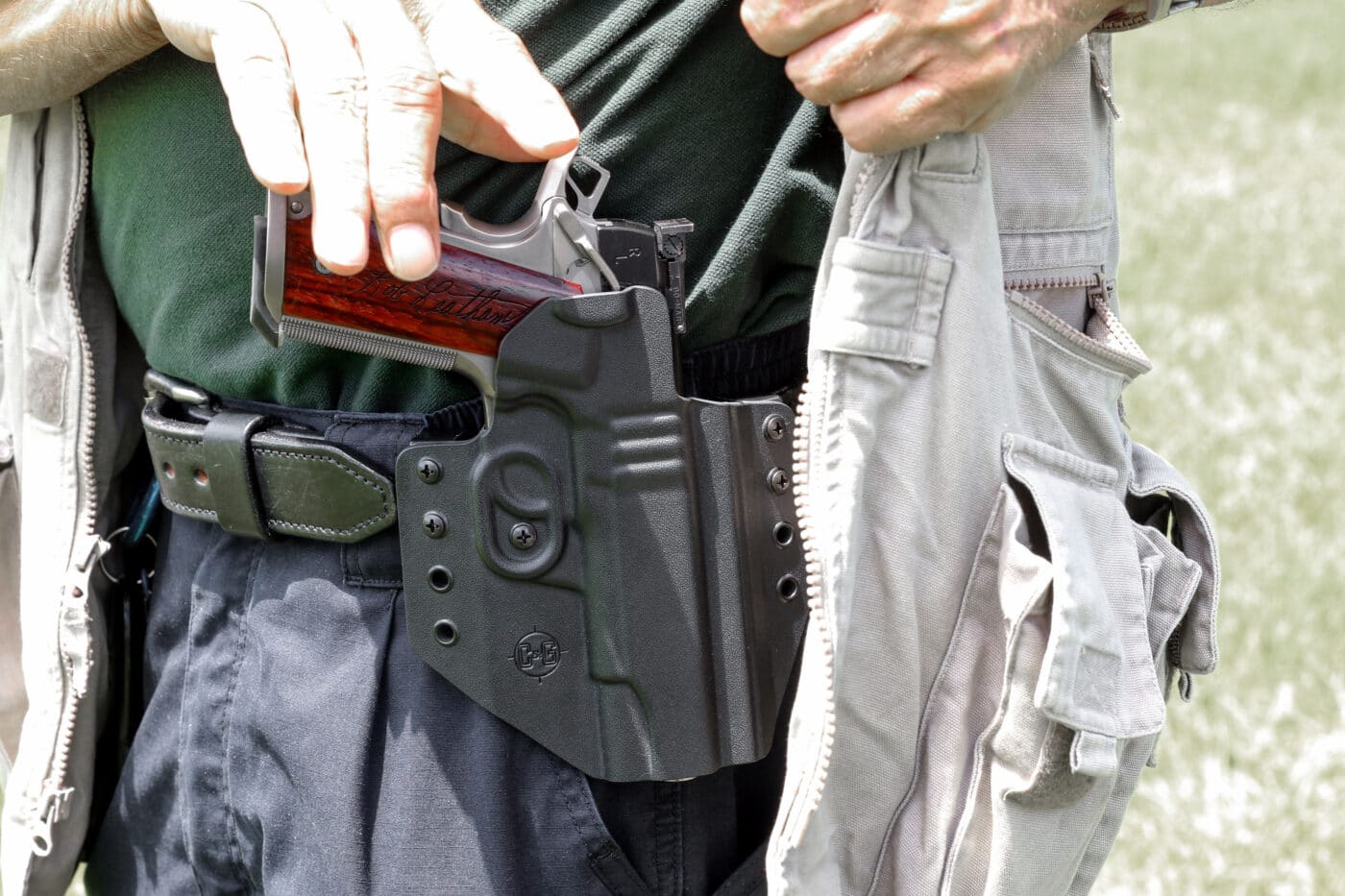
I was pleasantly surprised to discover that its neutral cant gave me decent across-the-body reach, and of course great accessibility for a “cavalry draw” with the non-dominant hand, yet remained concealable so long as the cover garment draped down in front of that hip.
Customer Service
I was particularly pleased with the way C&G treats its customers. A few weeks after receiving the holster, I got a form email from the company asking for a critique. Chris tells me this is standard policy for C&G. As both a cop and a businessman, he knows that you can’t deliver the best service without feedback from those you serve. That was impressive as heck.
Finally, while my test holsters were all from the Quickship line, you can “have it your way” with C&G’s custom options, here.
If you are in the market for some Kydex gun gear, C&G should definitely be one product line you to check out.
Editor’s Note: Be sure to check out The Armory Life Forum, where you can comment about our daily articles, as well as just talk guns and gear. Click the “Go To Forum Thread” link below to jump in!
Join the Discussion
Featured in this article
Continue Reading
Did you enjoy this article?

 56
56





